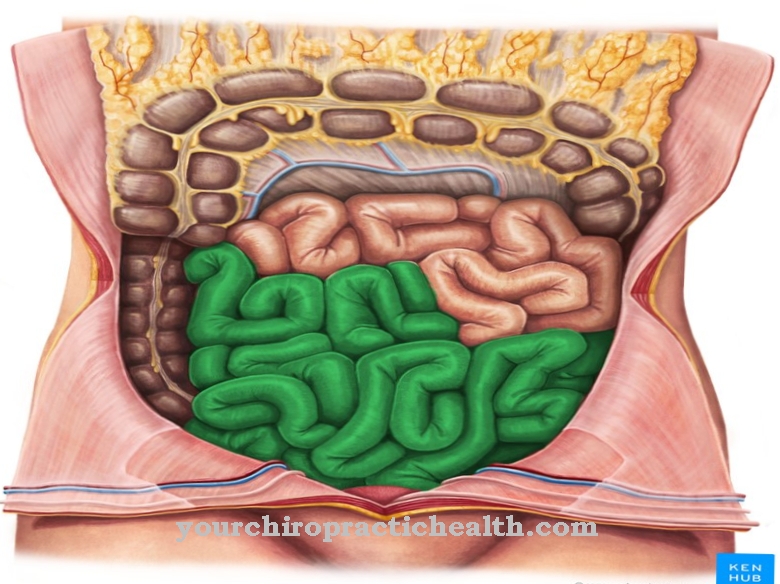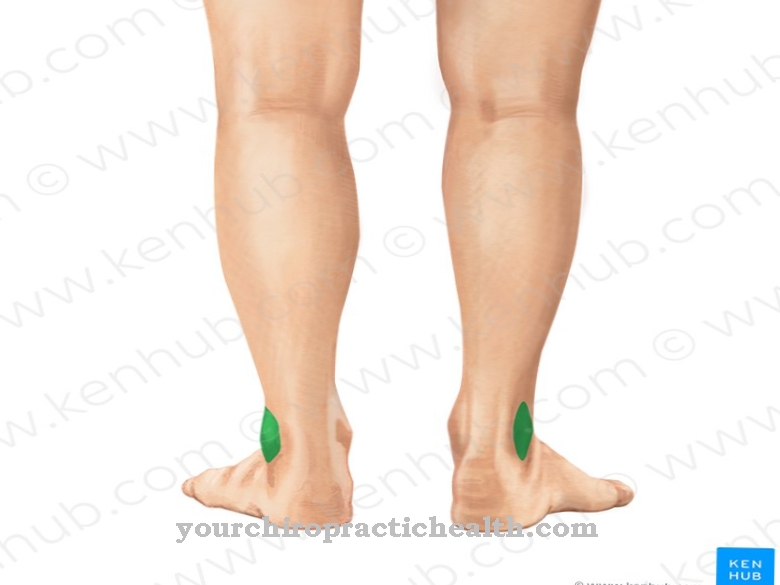In the Lacrimal gland it is an important gland that performs crucial functions. While many people only connect the tear gland to the tear fluid while crying, it performs numerous tasks every day.
What is a lacrimal gland?
The Lacrimal gland is located on the outer edge of the eyelid and in close proximity to the nose. It consists of a gland and several ducts. While the tear fluid is formed in the area of the eye socket, the drainage of the tear duct is in the inner corner of the eye. The lacrimal gland is constantly producing fluid.
On the one hand, this comes to the fore in emotional situations, when crying, and on the other hand, it keeps the eye moist around the clock. This is the only way to prevent the cornea from drying out and causing pain. The liquid is optimally distributed in the eye through regular blinking. The blinking of the eye is mostly unconscious and more than ten thousand times a day.
Often many people only notice the lacrimal gland when it is not working properly. As soon as the lacrimal gland no longer provides enough fluid for various reasons, the eyes are not optimally protected in many situations. The eyes dry out, the blinking is painful, and foreign objects cannot be rinsed out effectively. The numerous functions of the lacrimal gland are often forgotten in everyday life.
Anatomy & structure
The lacrimal gland consists of two parts. The greater part is above the eye. It lies between the eyebrow and the eye, approximately level with the outer eye socket. The second part of the lacrimal gland is in the region where the conjunctiva and eyelid meet. This can be seen by folding down the lower eyelid.
The drains of the lacrimal gland are located in the inner corner of the eye. This is where the tear fluid is absorbed and passed on to the nose. The lacrimal gland has several outlets that release the liquid into the eye. These are located in both the upper and lower eyelids. The lacrimal tubules often run separately from one another and unite before crossing into the tear sac. The body collects the fluid that was used to rinse the eye in the tear sac. The tears are then excreted through the nose. This is also the reason why people have runny noses when they cry.
The structure of the organ is thus staggered in the lacrimal gland, lacrimal sac, lacrimal ducts and lacrimal duct. The individual components are dependent on one another. The lacrimal gland can only work properly if the function of all elements is ensured.
Function & tasks
The lacrimal gland has a very wide range of functions. Even if the theory has not yet been proven, scientists continue to assume that crying in emotional situations has a positive effect on existing stress and prevents the development of depression.
But the lacrimal gland also performs many tasks every day outside of emotional moments. These include, in particular, the production of a tear film to protect the eye. On the one hand, this ensures that the eye does not dry out and that oxygen can penetrate the cornea unhindered from the outside. On the other hand, it is responsible for ensuring that there is no friction between the eyelid and cornea while blinking.
The regular blinking of the eye usually ensures that the eyes are always moist. If he takes a break for a while, the eyes dry out quickly. Once such a process is started, closing the eyelids can be perceived as painful because the smear layer between the skin and the cornea is missing. In addition, it serves as protection for the eye in that it flushes out foreign bodies.
As soon as small particles enter the eye, the lacrimal gland produces more fluid. It also protects the cornea from frequent infections by the tear film repelling pathogens and preventing them from entering the eye. But the lacrimal gland not only protects against external influences. At the same time, it removes cells expelled from the cornea and supports the metabolism of the cornea.
You can find your medication here
➔ Medicines for eye infectionsIllnesses & ailments
While it is hardly noticed in everyday life, unpleasant complaints arise as soon as the lacrimal gland is diseased. This leads to pain and a foreign body sensation if sufficient fluid is no longer produced. This phenomenon can be based on hormonal fluctuations or the use of certain medications.
It is also possible that the blinking of the eye occurs too quickly. This is often the case, for example, when people are concentrating on a written task. Environmental factors such as heating air or cigarette smoke, thyroid diseases and diabetes can also be responsible.
Inflammation of the lacrimal gland is often perceived as particularly painful. Their occurrence is very rare and mostly linked to the occurrence of viral diseases. These include mumps and Pfeiffer's glandular fever. However, it is also possible that other pathogens triggered the inflammation. This leads to swelling of the upper lid, which is often accompanied by reddening. The inflammation can be acute or chronic.
The lacrimal gland can provide the breeding ground for a tumor to develop. In most cases, however, these are benign ulcers. In most cases, the tumor takes a long time to develop. Later on, the movement of the eye may be restricted or those affected may see double vision. It is advisable to have the benign tumor removed completely. Care is taken to ensure that no residues remain. With these there is the risk that recurring tumors will develop malignant degenerations.






.jpg)

















.jpg)



